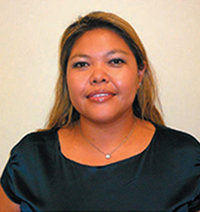 Why did you choose your specific health professional career?
Why did you choose your specific health professional career?
It was a late decision; I decided when I was a junior in college. Actually the Minority Affairs Office at the University of Arizona College of Medicine introduced me to medicine. Until then, I didn’t think of it as a career. So they kind of exposed me to the idea of a health care career. Eventually, I decided to pursue medicine and to go on to become a physician.
What experiences did you have to make sure this profession was right for you?
Arizona State University has a pre-med program which is an internship that takes place during the summer. In this program you actually work in the emergency departments. You are exposed to the health profession from that aspect. I also attended the Minority Medical Education Program (MMEP) at the University of Arizona, both experiences actually encouraged me to choose to go into medicine.
Describe any obstacles or barriers to success that you encountered along your health professional career path and how did you overcome them?
Becoming a physician actually takes a long time. For me, it took a total of 15 years. One obstacle I had was keeping focused on my goals. You have to remain focused and believe that you are going to finish medical school and earn your medical degree. Another obstacle was being away from my family. I had to move to Tucson from Phoenix and I had to live by myself which was an obstacle for me because I had no family nearby. The greatest obstacle I faced was that I was the only Native American in my undergraduate classes and while I worked at getting my master’s degree. This was also the case when I went into medicine. So that was sometimes difficult, but I had support from the University of Arizona due to the Minority Affairs program. I was exposed to Native American medical students even though some of them were two or three years ahead me. I was able to interact with them.
What do you do in your current job?
In my current job, I am a Family Practice physician at the Phoenix Indian Medical Center (PIMC). I work in primary care, mostly in adult medicine, but I see adolescents from the age of 15 and up. I provide primary care for all the patients here. I also work in a procedural clinic and a colposcopy clinic.
What advice do you have for American Indian/Alaska Native students who are interested in health careers?
I would encourage them to actually seek experiences in the different health care related fields. I encourage this because you always have this image or perception of what it’s going to be like, but you don’t really know what it’s like until you see it and live it. It’s good to actually spend time on a day to day basis with somebody whom you think has an interesting job. Personally, I’ve actually never spent any time with a physician until I was a senior in college. It’s difficult to get this type of experience. Talk with people who are in training to become a physician like medical students, residents, and people out in the community and actually see what they do in medicine. For me, going into medicine actually opened up many different avenues, and you can actually create your own career if you want to. A large portion of medicine is being committed to your goal, because it does take a commitment, and in this day and economic time, you have to be very, very committed to medicine to endure all the work and put up with everything else that they don’t teach you about in medical school or in residency. While in school you learn about things such as finances and health care funding. There are more things that you learn only while you are at your job.

